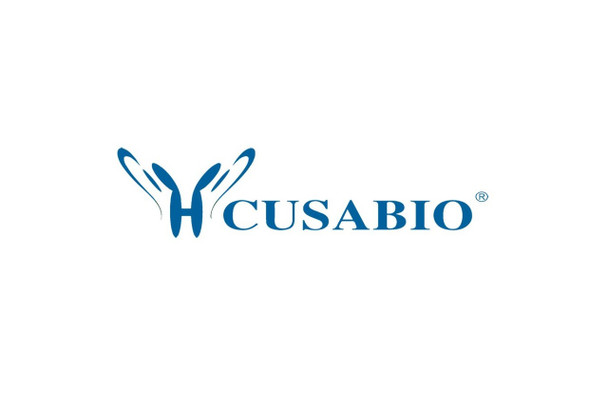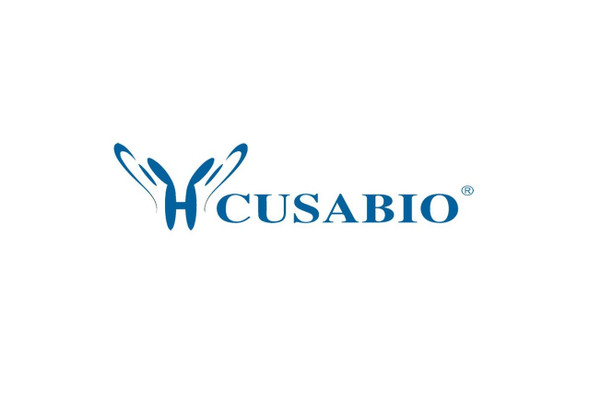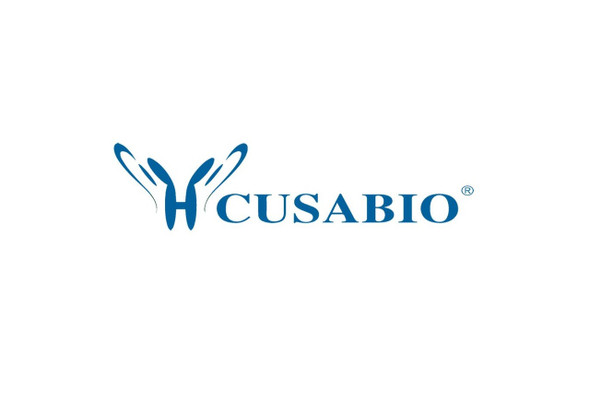Cusabio Zaire ebolavirus Recombinants
Recombinant Zaire ebolavirus Envelope glycoprotein (GP), partial | CSB-EP311249ZAT
- SKU:
- CSB-EP311249ZAT
- Availability:
- 13 - 23 Working Days
Description
Recombinant Zaire ebolavirus Envelope glycoprotein (GP), partial | CSB-EP311249ZAT | Cusabio
Alternative Name(s): GP1,2 Short name: GP Cleaved into the following 3 chains: GP1 GP2 GP2-delta
Gene Names: GP
Research Areas: Microbiology
Organism: Zaire ebolavirus (strain Kikwit-95) (ZEBOV) (Zaire Ebola virus)
AA Sequence: IPLGVIHNSTLQVSDVDKLVCRDKLSSTNQLRSVGLNLEGNGVATDVPSATKRWGFRSGVPPKVVNYEAGEWAENCYNLEIKKPDGSECLPAAPDGIRGFPRCRYVHKVSGTGPCAGDFAFHKEGAFFLYDRLASTVIYRGTTFAEGVVAFLILPQAKKDFFSSHPLREPVNATEDPSSGYYSTTIRYQATGFGTNETEYLFEVDNLTYVQLESRFTPQFLLQLNETIYTSGKRSNTTGKLIWKVNPEIDTTIGEWAFWETKKNLTRKIRSEELSFTAVSNRAKNISGQSPARTSSDPGTNTTTEDHKIMASENSSAMVQVHSQGREAAVSHLTTLATISTSPQPPTTKPGPDNSTHNTPVYKLDISEATQVEQHHRRTDNDSTASDTPPATTAAGPLKAENTNTSKGTDLLDPATTTSPQNHSETAGNNNTHHQDTGEESASSGKLGLITNTIAGVAGLITGGRRARR
Source: E.coli
Tag Info: N-terminal 6xHis-tagged
Expression Region: 33-501aa
Sequence Info: Extracellular Domain
MW: 54.9 kDa
Purity: Greater than 90% as determined by SDS-PAGE.
Relevance: GP1 is responsible for binding to the receptor(s) on target cells. Interacts with CD209/DC-SIGN and CLEC4M/DC-SIGNR which act as cofactors for virus entry into the host cell. Binding to CD209 and CLEC4M, which are respectively found on dendritic cells (DCs), and on endothelial cells of liver sinusoids and lymph node sinuses, facilitate infection of macrophages and endothelial cells. These interactions not only facilitate virus cell entry, but also allow capture of viral particles by DCs and subsequent transmission to susceptible cells without DCs infection (trans infection). Binding to the macrophage specific lectin CLEC10A also seems to enhance virus infectivity. Interaction with FOLR1/folate receptor alpha may be a cofactor for virus entry in some cell types, although results are contradictory. Members of the Tyro3 receptor tyrosine kinase family also seem to be cell entry factors in filovirus infection. Once attached, the virions are internalized through clathrin-dependent endocytosis and/or macropinocytosis. After internalization of the virus into the endosomes of the host cell, proteolysis of GP1 by two cysteine proteases, CTSB/cathepsin B and CTSL/cathepsin L presumably induces a conformational change of GP2, unmasking its fusion peptide and initiating membranes fusion GP2 acts as a class I viral fusion protein. Under the current model, the protein has at least 3 conformational states: pre-fusion native state, pre-hairpin intermediate state, and post-fusion hairpin state. During viral and target cell membrane fusion, the coiled coil regions (heptad repeats) assume a trimer-of-hairpins structure, positioning the fusion peptide in close proximity to the C-terminal region of the ectodomain. The formation of this structure appears to drive apposition and subsequent fusion of viral and target cell membranes. Responsible for penetration of the virus into the cell cytoplasm by mediating the fusion of the membrane of the endocytosed virus particle with the endosomal membrane. Low pH in endosomes induces an irreversible conformational change in GP2, releasing the fusion hydrophobic peptide GP1,2 mediates endothelial cell activation and decreases endothelial barrier function. Mediates activation of primary macrophages. At terminal stages of the viral infection, when its expression is high, GP1,2 down-modulates the expression of various host cell surface molecules that are essential for immune surveillance and cell adhesion. Down-modulates integrins ITGA1, ITGA2, ITGA3, ITGA4, ITGA5, ITGA6, ITGAV and ITGB1. GP1,2 alters the cellular recycling of the dimer alpha-V/beta-3 via a dynamin-dependent pathway. Decrease in the host cell surface expression of various adhesion molecules may lead to cell detachment, contributing to the disruption of blood vessel integrity and hemorrhages developed during Ebola virus infection (cytotoxicity). This cytotoxicity appears late in the infection, only after the massive release of viral particles by infected cells. Down-modulation of host MHC-I, leading to altered recognition by immune cells, may explain the immune suppression and inflammatory dysfunction linked to Ebola infection. Also down-modulates EGFR surface expression GP2delta is part of the complex GP1,2delta released by host ADAM17 metalloprotease. This secreted complex may play a role in the pathogenesis of the virus by efficiently blocking the neutralizing antibodies that would otherwise neutralize the virus surface glycoproteins GP1,2. Might therefore contribute to the lack of inflammatory reaction seen during infection in spite the of extensive necrosis and massive virus production. GP1,2delta does not seem to be involved in activation of primary macrophages
Reference: "The virion glycoproteins of Ebola viruses are encoded in two reading frames and are expressed through transcriptional editing."Sanchez A., Trappier S.G., Mahy B.W.J., Peters C.J., Nichol S.T.Proc. Natl. Acad. Sci. U.S.A. 93:3602-3607(1996)
Storage: The shelf life is related to many factors, storage state, buffer ingredients, storage temperature and the stability of the protein itself. Generally, the shelf life of liquid form is 6 months at -20?/-80?. The shelf life of lyophilized form is 12 months at -20?/-80?.
Notes: Repeated freezing and thawing is not recommended. Store working aliquots at 4? for up to one week.
Function: GP1 is responsible for binding to the receptor(s) on target cells. Interacts with CD209/DC-SIGN and CLEC4M/DC-SIGNR which act as cofactors for virus entry into the host cell. Binding to CD209 and CLEC4M, which are respectively found on dendritic cells (DCs), and on endothelial cells of liver sinusoids and lymph node sinuses, facilitate infection of macrophages and endothelial cells. These interactions not only facilitate virus cell entry, but also allow capture of viral particles by DCs and subsequent transmission to susceptible cells without DCs infection (trans infection). Binding to the macrophage specific lectin CLEC10A also seem to enhance virus infectivity. Interaction with FOLR1/folate receptor alpha may be a cofactor for virus entry in some cell types, although results are contradictory. Members of the Tyro3 receptor tyrosine kinase family also seem to be cell entry factors in filovirus infection. Once attached, the virions are internalized through clathrin-dependent endocytosis and/or macropinocytosis. After internalization of the virus into the endosomes of the host cell, proteolysis of GP1 by two cysteine proteases, CTSB/cathepsin B and CTSL/cathepsin L presumably induces a conformational change of GP2, allowing its binding to the host entry receptor NPC1 and unmasking its fusion peptide to initiate membranes fusion.
Involvement in disease:
Subcellular Location: GP2: Virion membrane, Single-pass type I membrane protein, Host cell membrane, Single-pass type I membrane protein, Note=In the cell, localizes to the plasma membrane lipid rafts, which probably represent the assembly and budding site, SUBCELLULAR LOCATION: GP1: Virion membrane, Peripheral membrane protein, Host cell membrane, Peripheral membrane protein, Note=GP1 is not anchored to the viral envelope, but forms a disulfid-linked complex with the extravirion surface GP2, In the cell, both GP1 and GP2 localize to the plasma membrane lipid rafts, which probably represent the assembly and budding site, GP1 can also be shed after proteolytic processing, SUBCELLULAR LOCATION: GP2-delta: Secreted
Protein Families: Filoviruses glycoprotein family
Tissue Specificity:
Paythway:
Form: Liquid or Lyophilized powder
Buffer: If the delivery form is liquid, the default storage buffer is Tris/PBS-based buffer, 5%-50% glycerol. If the delivery form is lyophilized powder, the buffer before lyophilization is Tris/PBS-based buffer, 6% Trehalose, pH 8.0.
Reconstitution: We recommend that this vial be briefly centrifuged prior to opening to bring the contents to the bottom. Please reconstitute protein in deionized sterile water to a concentration of 0.1-1.0 mg/mL.We recommend to add 5-50% of glycerol (final concentration) and aliquot for long-term storage at -20?/-80?. Our default final concentration of glycerol is 50%. Customers could use it as reference.
Uniprot ID: P87666
HGNC Database Link: HGNC
UniGene Database Link: UniGene
KEGG Database Link: KEGG
STRING Database Link: STRING
OMIM Database Link: OMIM









